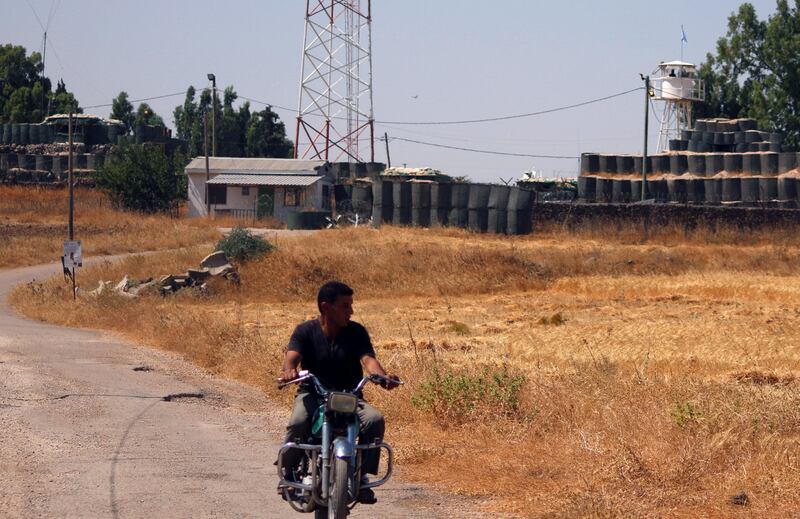With the US and Russia finally co-operating in Syria, there is now the prospect of even broader international efforts to alleviate the suffering of civilians and bring an end to the conflict.
One way a broader co-operation could manifest itself is with the establishment of “safe zones” — demilitarised areas where civilians caught up in the conflict can find refuge.
US secretary of state Rex Tillerson has said that Washington is willing to work with Moscow on no-fly zones, seen as a necessary precursor to safe zones. And repeatedly, US president Donald Trump has said that Washington would work to establish safe zones in the country.
In theory, safe zones provide refuge to civilians trying to get away from conflict; they provide centralised areas where aid can be distributed; and they help stem the flow of refugees to other nations, decreasing burdens on neighbouring countries.
But creating safe zones that are actually safe and effective is incredibly difficult.
Several factions involved in Syria’s complicated civil war already claim to have established safe zones.
Read more: 'Cautious calm' in southern Syria ceasefire despite regime violations
The Syrian government claims that many areas under its control are perfectly safe to receive returning refugees and civilians fleeing the war in other parts of the country. Turkey, meanwhile, says the land it helped rebel proxies to capture in northern Syria is a safe zone. And to the Kurdish YPG militia, the areas of north-eastern Syria where they are setting the foundations for an ethnic state are considered a haven.
However, these “safe zones” are so far only safe for those who belong to or are affiliated with the group that occupies them.
A Sunni refugee with relatives in the Free Syrian Army would not feel safe in Syrian government territory. Nor would an Alawite — a coreligionist of Syria’s president — with familial ties to the regime fare well in the Turkish-backed rebel enclaves of the country’s north, home to some hyper sectarian Sunni militias not known for their tolerance. Neither would likely feel welcome or safe in YPG territory.
These so-called safe areas are also susceptible to future conflict. Kurdish lands controlled by the YPG are facing threats of battles with Turkey and its proxies while the Turkish-backed rebel enclave in northern Syria could eventually see a Syrian government offensive at some point as Damascus tries to recapture as much territory as it can.
The question of safe zones is even more pressing now that leading politicians in Lebanon are increasingly calling for the estimated 1.5 million Syrian refugees in their country to be returned home.
Lebanon has always said the refugees must return home after the war. But after a June 30 suicide attack on Lebanese army soldiers raiding a refugee camp along Lebanon’s border with Syria, the urgency is greater with refugees seen as potential terrorists and a destabilising threat by politicians.
Whether the war is over or not, both pro and anti-regime camps in Lebanon want Syrian refugees out as soon as possible.
Pro-Damascus political parties like Hizbollah — which is fighting in Syria in support of president Bashar Al Assad — want to co-ordinate a return of refugees with the Syrian government, arguing that many areas under regime control are already safe. Lebanese groups that oppose Damascus say the Syrian government cannot be trusted and are encouraging a return lined up with the UN to safe zones, which do not exist.
Human rights campaigners, who have long warned that safe zones are rarely safe, are now alarmed by Lebanon’s calls for Syrians to leave the country.
"There are no safe zones in Syria and any forced returns there would be illegal under international law," said Human Rights Watch's Lebanon researcher Bassam Khawaja in a statement to The National. "The situation in Syria is too volatile for the guarantee of safe zones, and historically these types of areas have not successfully protected civilians."
A true, inclusive and secure safe zone in Syria would have to be a disarmed area controlled by a relatively impartial foreign actor - United Nations peacekeepers, for example - though there has been no movement to this end.
Russia or the US could theoretically force the creation of safe zones with their troops, but it is unlikely either country wants to dive even deeper into the war and engage in the unenviable task of securing a large area in the chaotic battlefield. Such a move by either country could act as a magnet for attacks from their enemies on the ground as well as sour relations with local allies by taking away areas under their control.
The easiest option — at least for the US and Russia — would be to establish no-fly zones over already outlined “de-escalation zones” in Syria while counting on local actors on the ground to create safe zones.
But this would likely stumble into the pitfalls of further setting up Syria as a partitioned state by underlining differences. And without outside forces on the ground to guarantee security, areas claimed to be safe could be used by militants as havens to escape attack — a development that could quickly make them combat zones again.
With the peace process so far largely relying on foreign powers leaning on their Syrian allies and proxies to force ceasefires in areas under their control, it is easy to envision potential safe zones being created in the same way.





